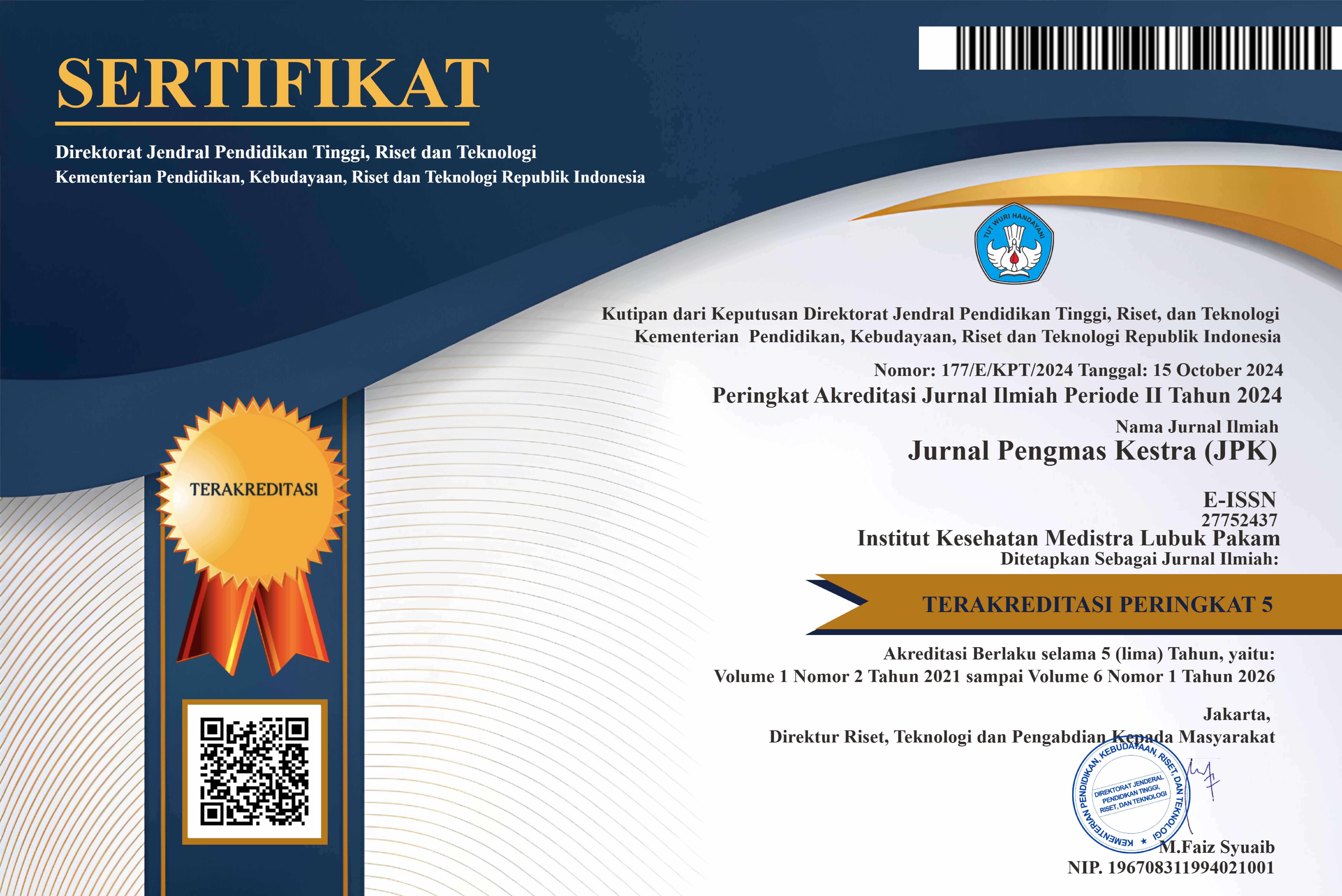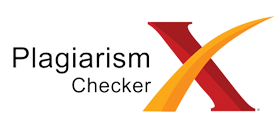EDUCATION ON THE UTILIZATION OF MORINGA LEAVES DECIL IN INCREASING BREAST MILK PRODUCTION
EDUCATION ON THE UTILIZATION OF MORINGA LEAVES DECIL IN INCREASING BREAST MILK PRODUCTION
DOI:
https://doi.org/10.35451/jpk.v2i2.1440Keywords:
education, moringa oleifera leaves, breast milk productionAbstract
thing in the growth and development of babies. Education that utilizes natural plants and has benefits for mothers and babies can be given to the community to help practice increasing breast milk through consumption of Moringa leaves. The aim of this education is to help mothers use Moringa oleifera leaves as a natural ingredient to increase breast milk. The target for this service is breastfeeding mothers using Leaflet media, video tutorials and Moringa leaves. The methods used are lecture, discussion, and PLA (Participatory Learning and Action) methods. The desired output is to increase education in breastfeeding by increasing milk production by consuming Moringa leaves by 20%. Implementation of dedication is given by doing a pretest and posttest. The results of the implementation showed that the average pretest score was 56.4, the posttest average score after education was 79, the average increase in score was 22.6. This shows that education can increase the utilization of Moringa leaves to increase breast milk production by 40%.
References
Anuhgera, D. E., Ritonnga, N. J., Sitorus, R. (2022). Kelor leaves infusion as a alternative in increasing the volume of breastmilk and birth weight in newborn. Jurnal Kebidanan Kestra (JKK), 4(2), 72—78.
Bai D. L.., Wu, K. M. (2013). Association between Intrapartum Interventions and Breastfeeding Duratioon. J Midwifery Womeen Health, 581(1), 25-32.
Bhargave, A ., Pandey, I., Nama, K. S., & Pandey, M. (2015). Moringa oleifera lamsanjana (horseradish tree) “a miracle food plant with multipurpose uses in rajasthanindia an overvie”w. Int J Pure App Biosci, 3(6) , 237-248.
Boss, M., Gardner, H., & Hartmann, P. (2018). Normal human lactation: closing the gap. F1000Research, 7.
Bueno, G. D ., Chantry C.(2015). Life does not make it easy to breast-feed: using the socio-ecological framework to determine social breast-feeding obstacles in a low-income population in Tijuana, Mexico. Public Health Nutrition,18,3371–85.
Foong, S. C ., Tan, M. L., Foong, W. C., Marasco, L. A., Ho, J. J, Ong, J. H. (2020).Oral galactagogues (natural therapies or drugs) for increasing breast milk production in mothers of non-hospitalised term infants. Cochrane Database Syst Rev.5.
Kemenkes RI, (2020). Profil kesehatan Indonesia 2019. Kemenkes RI
Kent., J. C, Gardner, H, Laai, C. T., Hartmann, P. E., Murray, K., Rea, A., et al.(2018). Hourly breast expression to estimate the rate of synthesis of milk and fat. Nutrients.10(9),1144.
Khamis A. G., Omar,A. M., Suleiman, S. A., Ali, F. S. (2017). Prevalence of exclusive breastfeeding and itts predictors among mothers in micheweni, chake-chake and north ‘a’districts, zanzibar. Clin Mother Child Health .14(2).
Malik, S. K., Ahmad, M., & Khan, F. (2017). Qualitative and quantitative estimation of terpenoid contents in some important plants of Punjab, Pakistan. Pakistan Journal of Science, 69(2), 150–154.
P. F. N. Raguindin, L. F. Dans, and J. F. King. (2014). Moringa oleifera as a galactagogue.Breastfeed Med, 9(6), 323–324.
Walingo, M.K., Mutuli, L. A. (2014). Influence of maternal beliefs, attitude, perceived behavior on breastfeediing among post partum mothers in Western Kenya. Pakistan J Nutr. 13, 250–45.
World Health Organization.(2017).Protecting, promoting and supporting breastfeeding in facilities providing maternity and newborn services. Geneva, Switzerland: WHO Document Production Service: Geneva, Switzerland; 2017.
Downloads
Published
Issue
Section
License
Copyright in each article is the property of the Author.




















